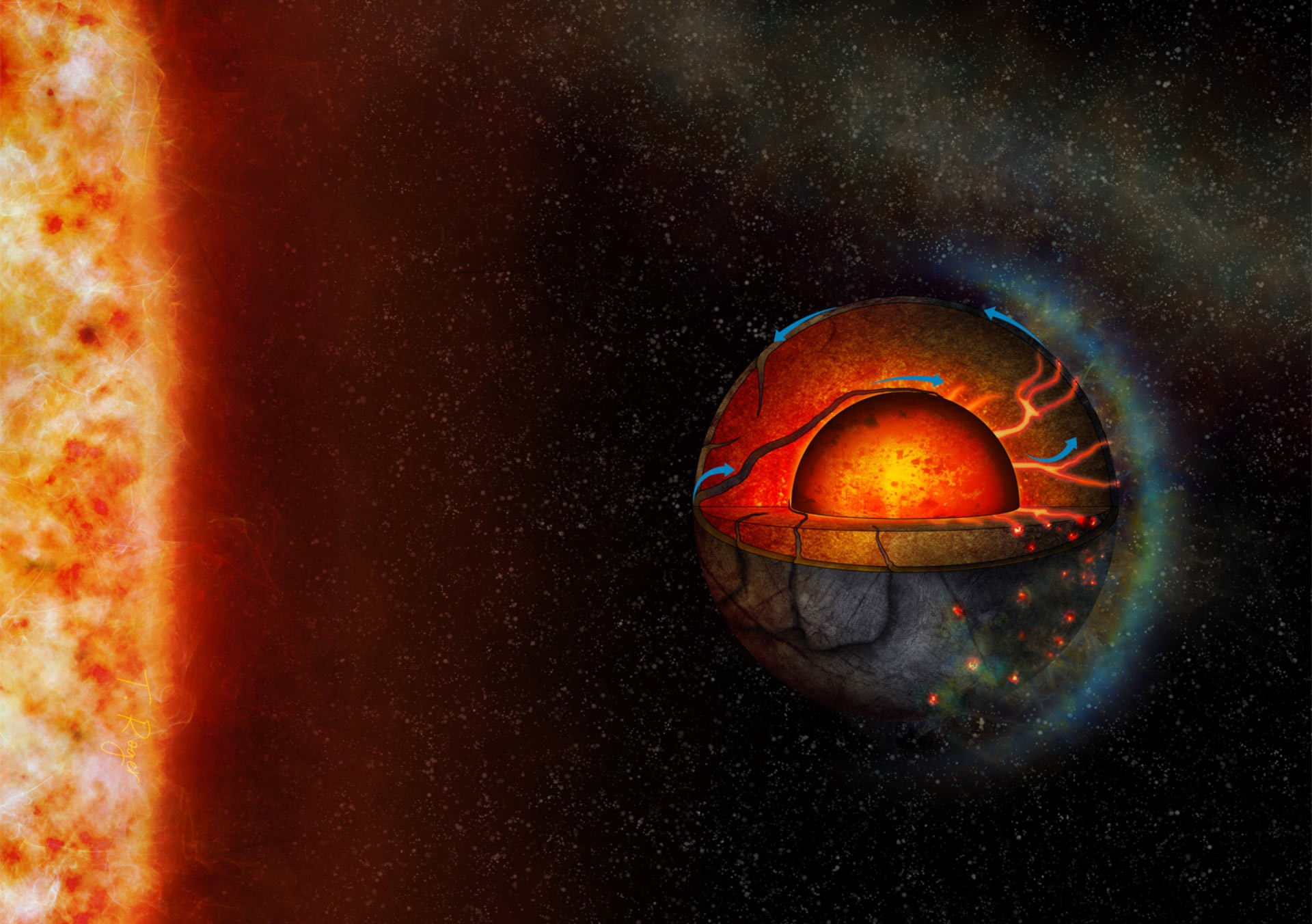A team of researchers hypothesizes the existence of hemispherical tectonic activity on the exoplanet LHS 3844b. It would be the direct result of a significant temperature contrast between its "day side" and its "night side". Their work is published in The Astrophysical Journal Letters.
Discovered in 2018 by NASA's TESS satellite, LHS 3844b is an exoplanet slightly larger than Earth (1.3 times its radius), evolving around a red dwarf star located about 49 light-years away towards Indian, a constellation in the southern hemisphere.
LHS 3844b completes one revolution of its star in just eleven hours . This amazing proximity implies a "locked" orbit. In other words, the exoplanet presents only one face to its star like the Moon with the Earth. In fact, its "day" side registers a temperature of approximately 770°C, while its night side is much colder with temperatures below –250°C .
Astronomer Tobias Meier, from the University of Bern and lead author of this study, thought that this temperature contrast could affect the flow of matter inside the planet . To test his theory with his team, they performed computer simulations involving different material strengths and internal heat sources.
These works revealed an upward flow of matter on one side of the planet and a downward flow on the other. In other words, the matter circulated from one hemisphere to the other .
These simulations also revealed something amazing. Based on what we are used to on Earth, we might expect material on the hot side of the day to be lighter and therefore flow upwards and vice versa. Yet some of the simulations also revealed an opposite flow direction.
“This counterintuitive result is due to the change in viscosity with temperature:cold material is more rigid and therefore does not want to bend, break or shrink inside “, emphasizes Dr. Dan Bower, co-author of the study. “Hot material, however, is less viscous. So even solid rock becomes more mobile when heated. It can therefore easily flow into the interior of the planet “.

According to the researcher, such material flow could have strange consequences. "Whichever side of the planet the material is flowing upwards, we could expect a large amount of volcanism on that side. Similar deep upwellings on Earth are spurring volcanic activity in Hawaii and the Island e. One could therefore imagine one hemisphere punctuated by countless volcanoes, while the other develops almost none “, he concludes.
It should be emphasized that this work is based only on simulations. More detailed observations such as a surface temperature map indicating increased outgassing from volcanism or detection of volcanic gases could help confirm these results.